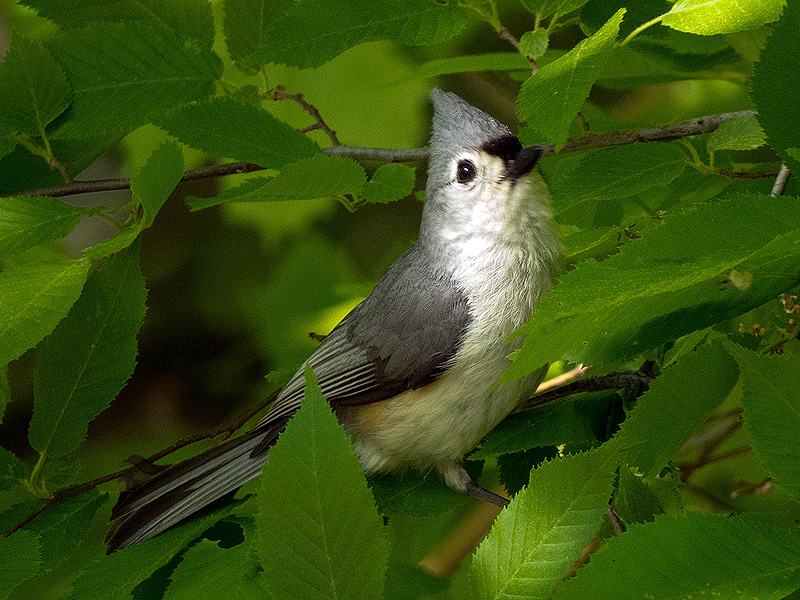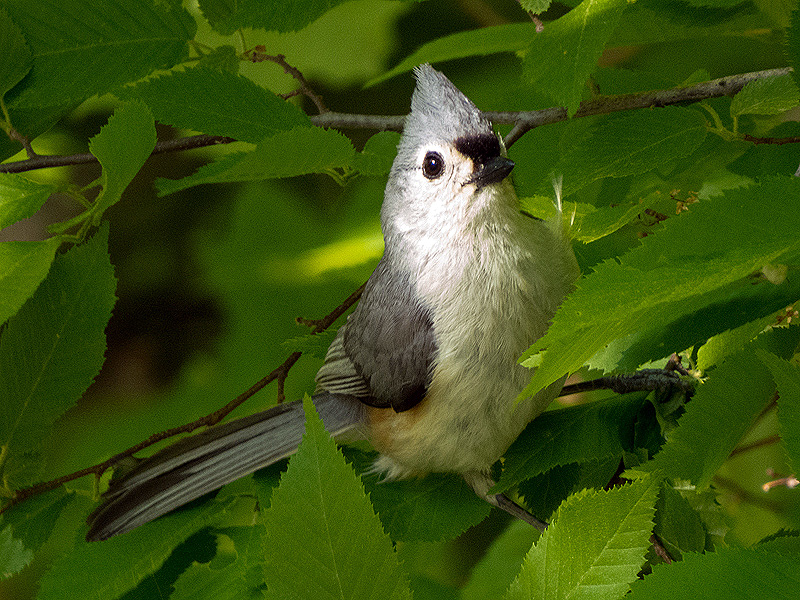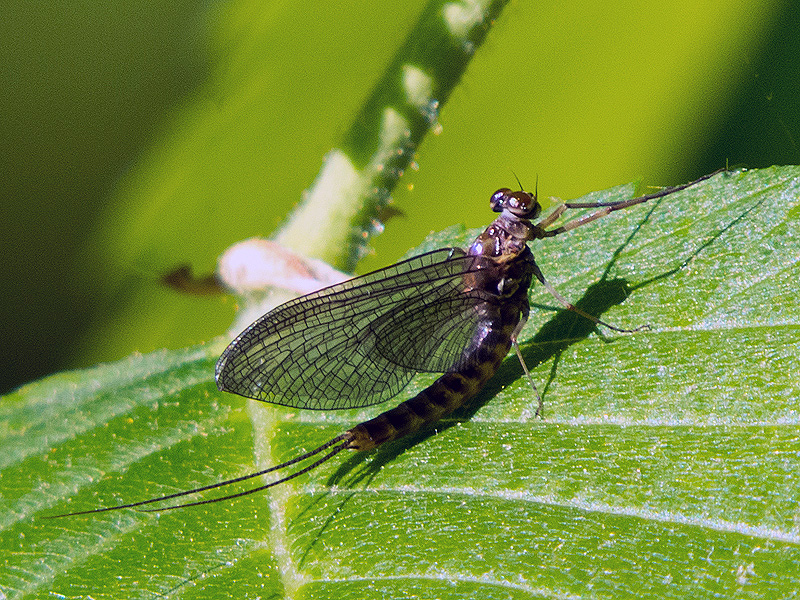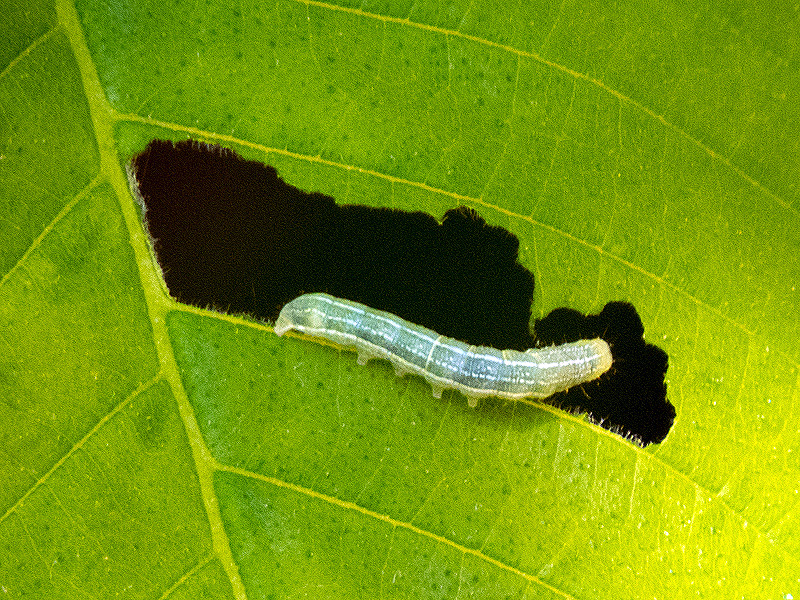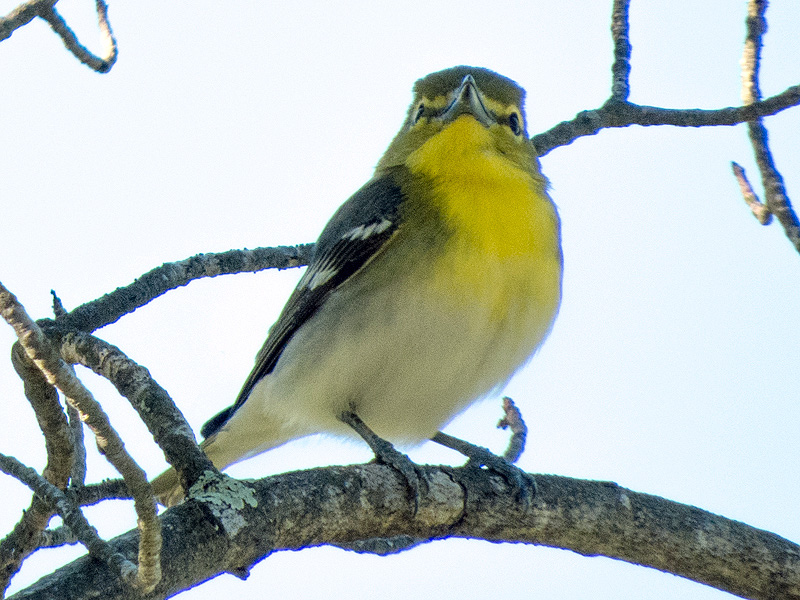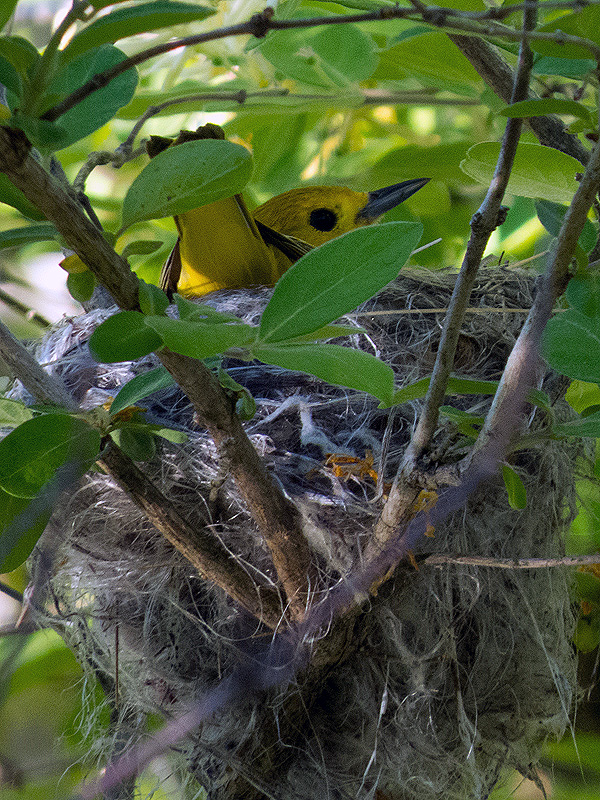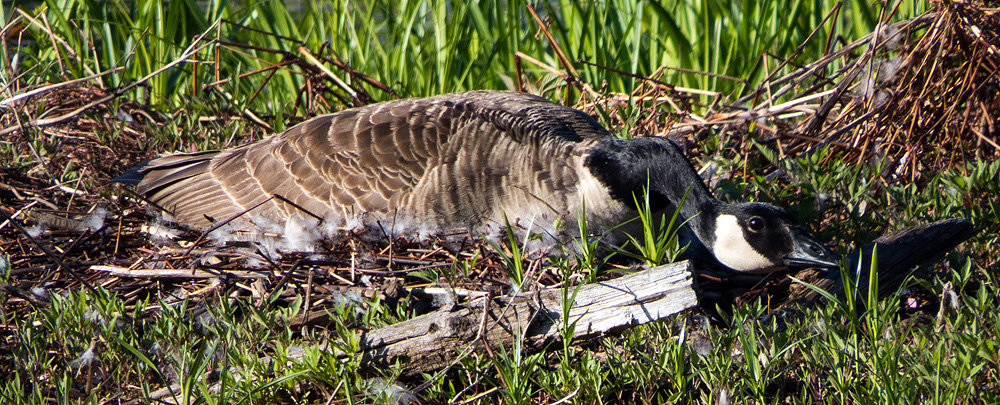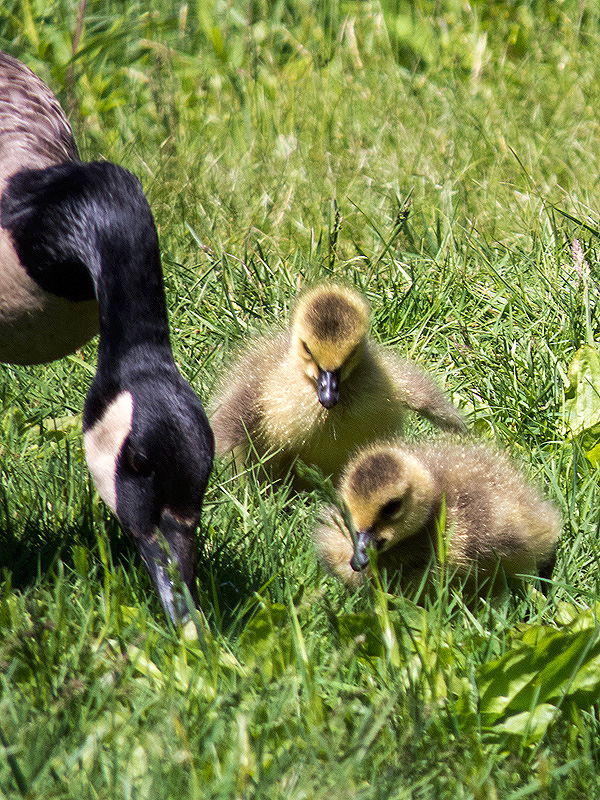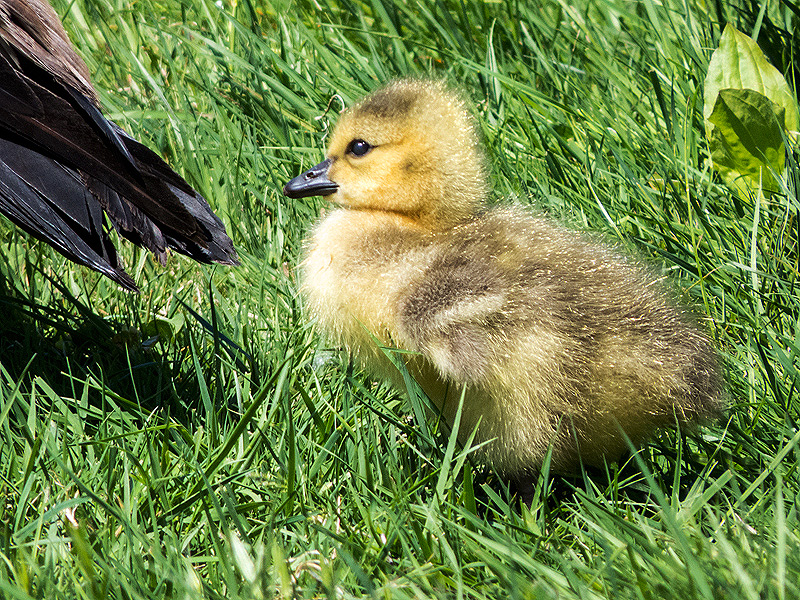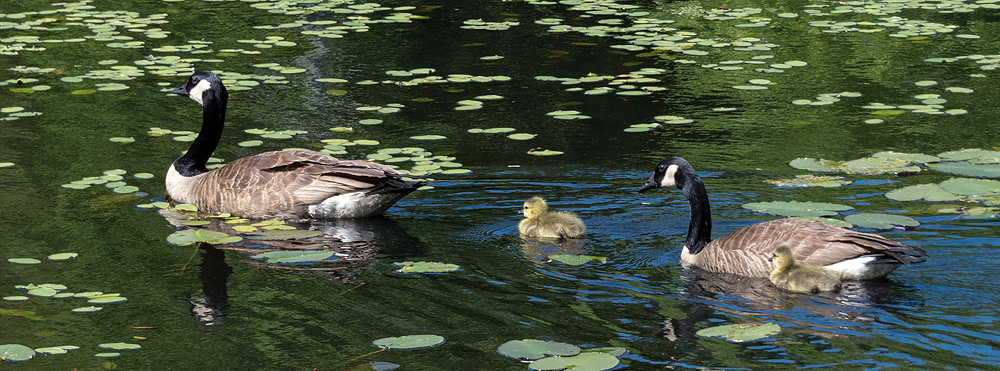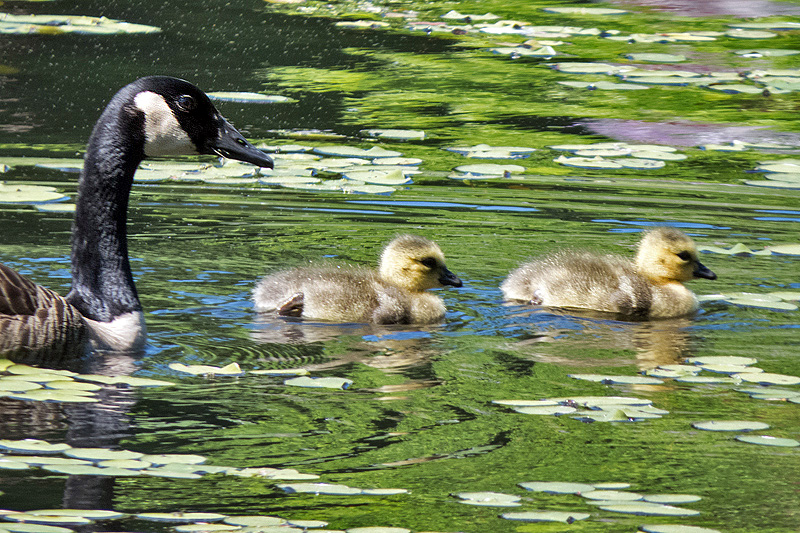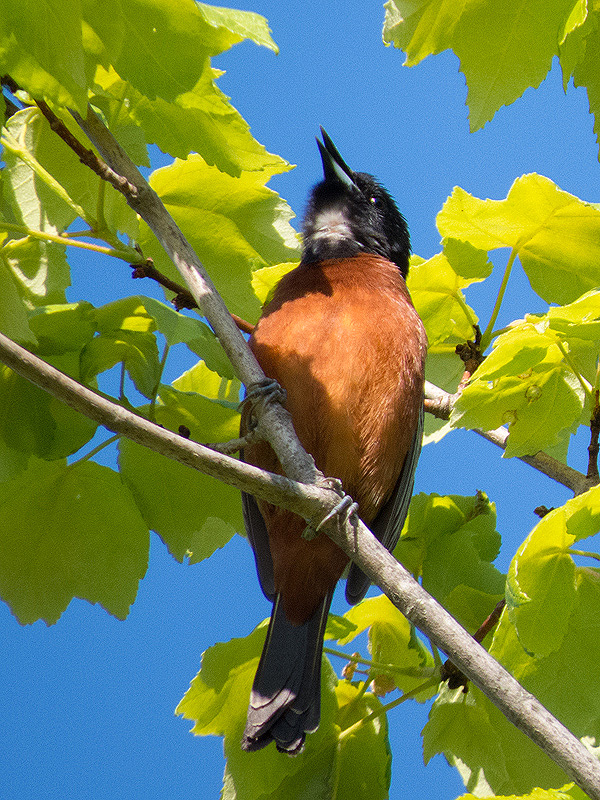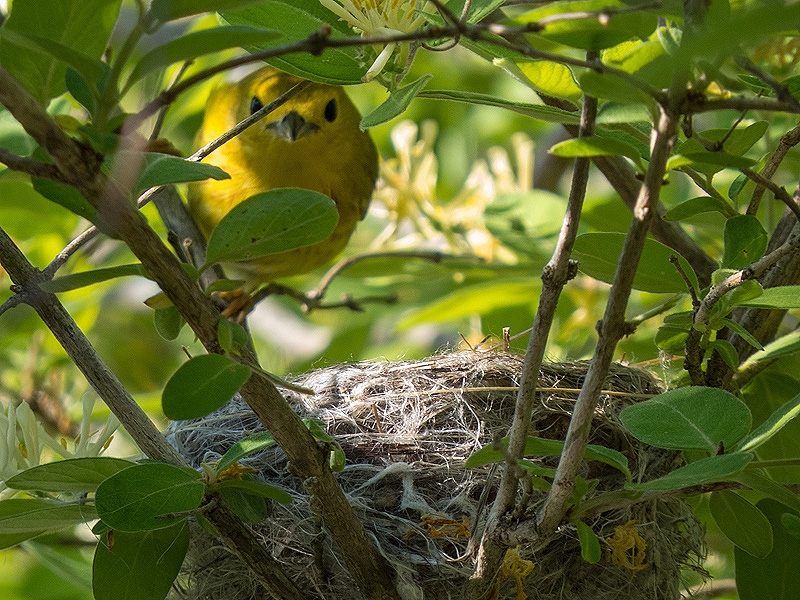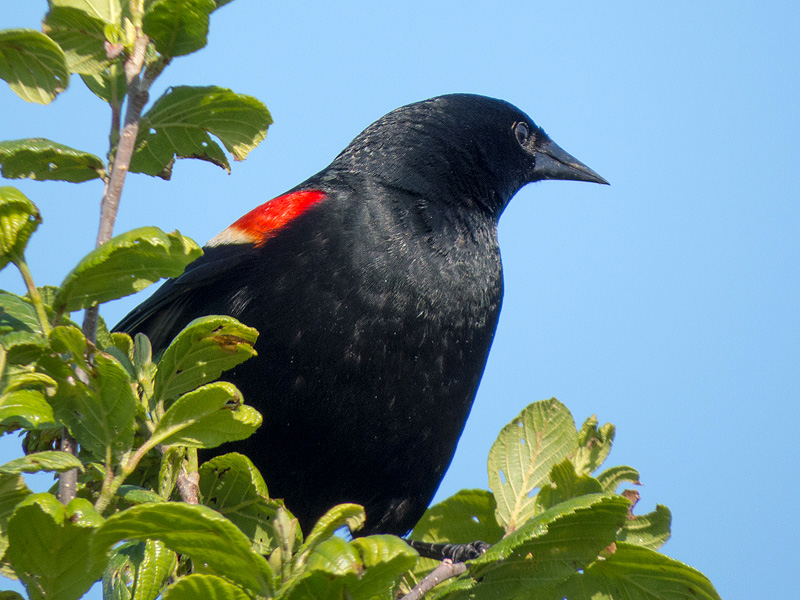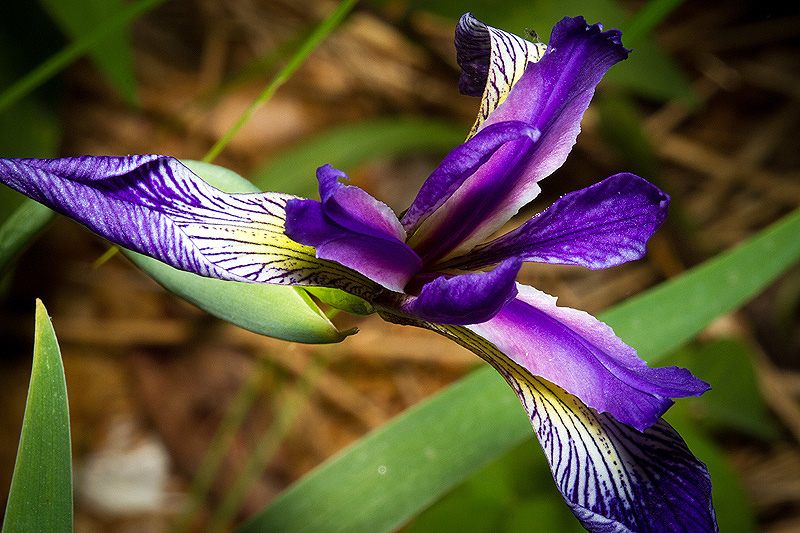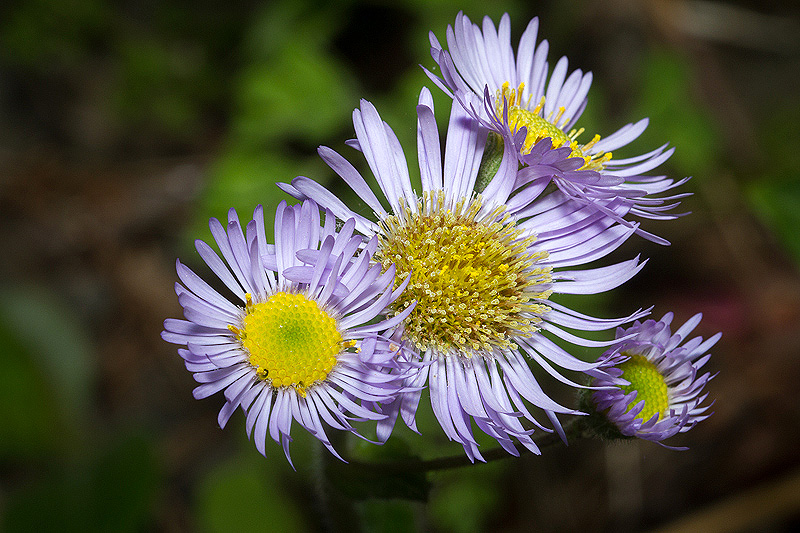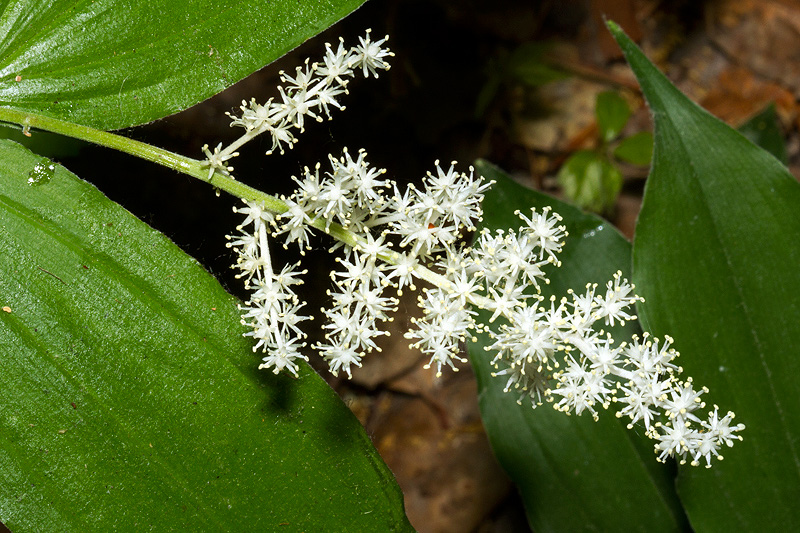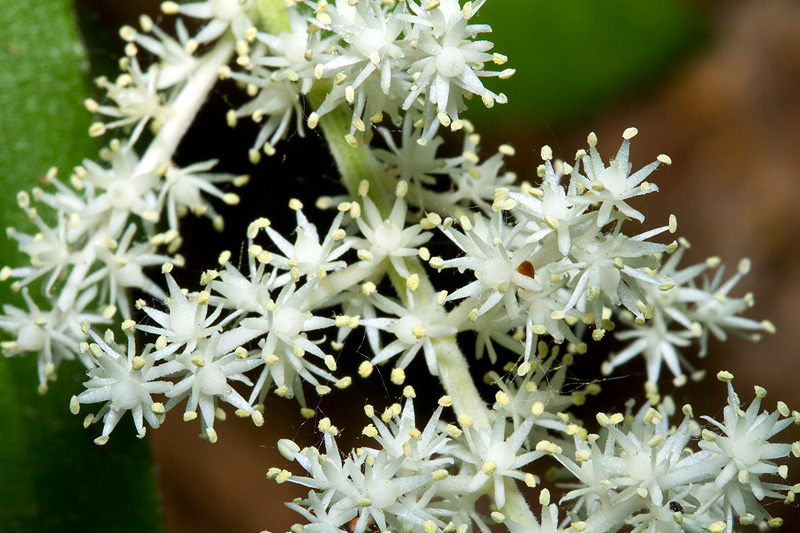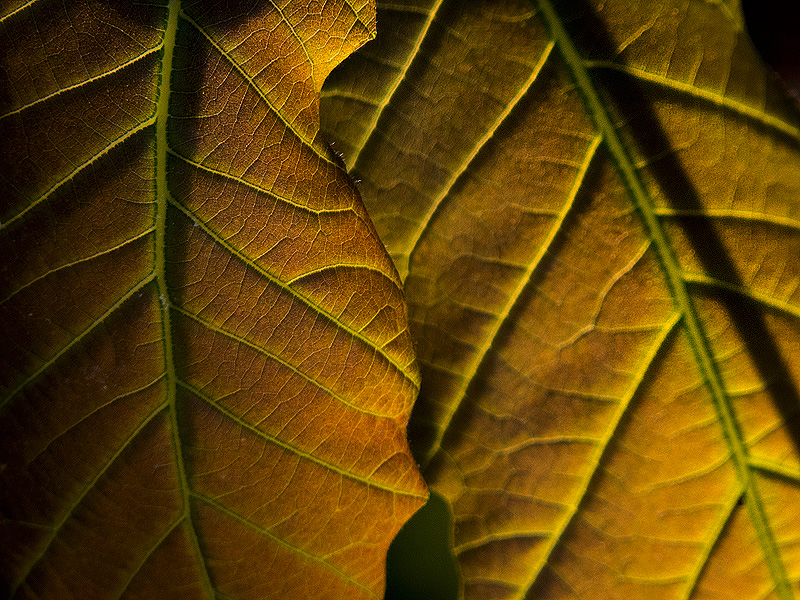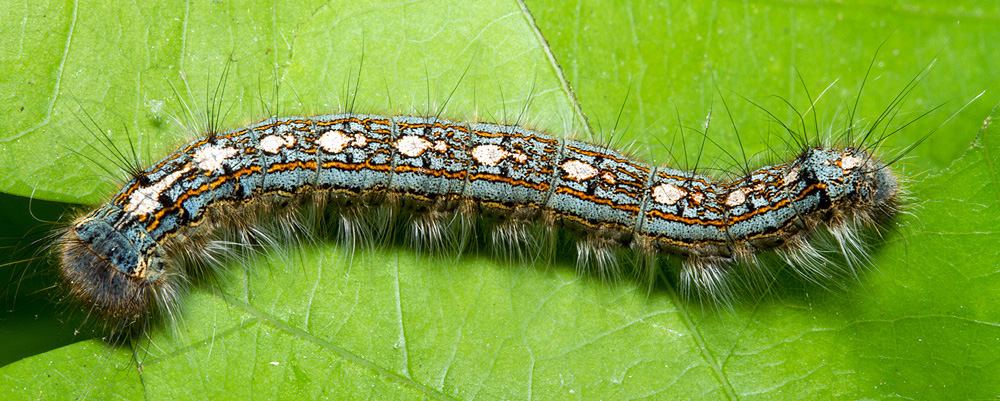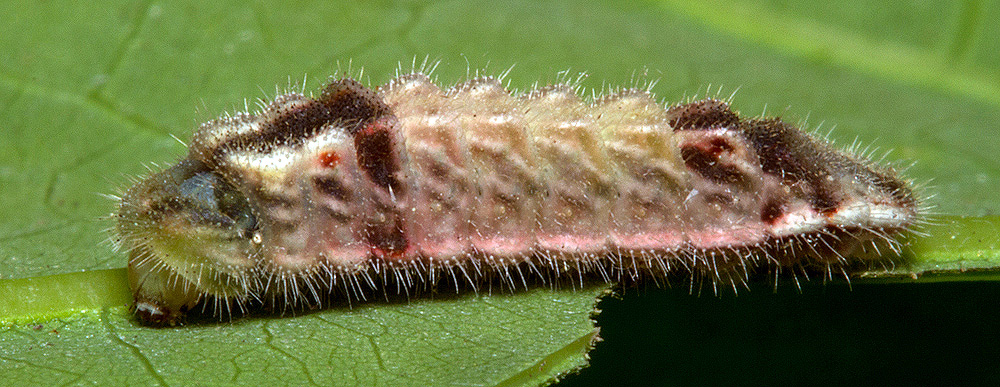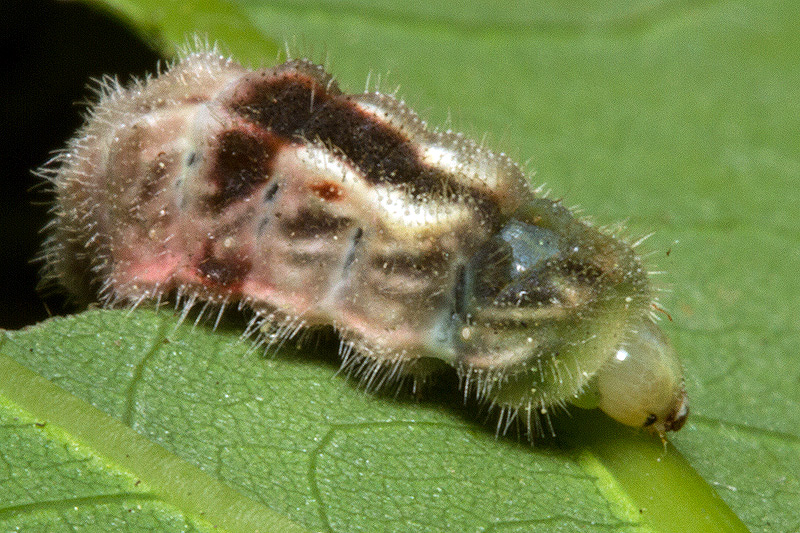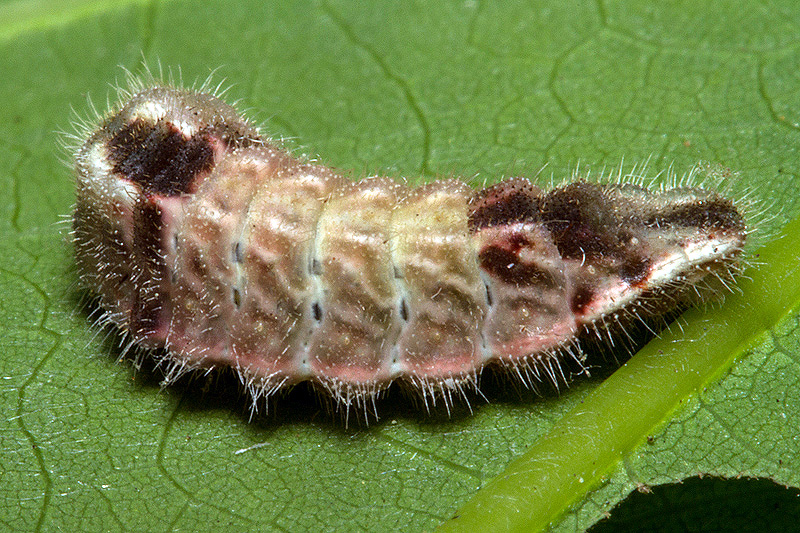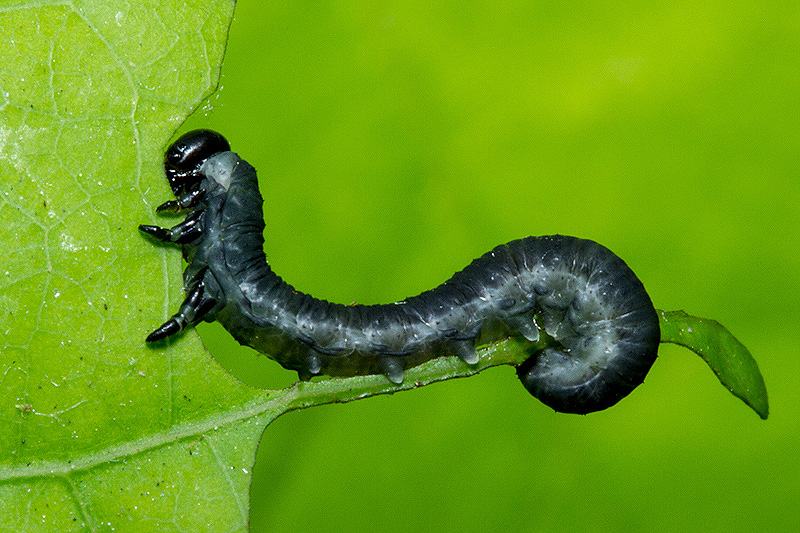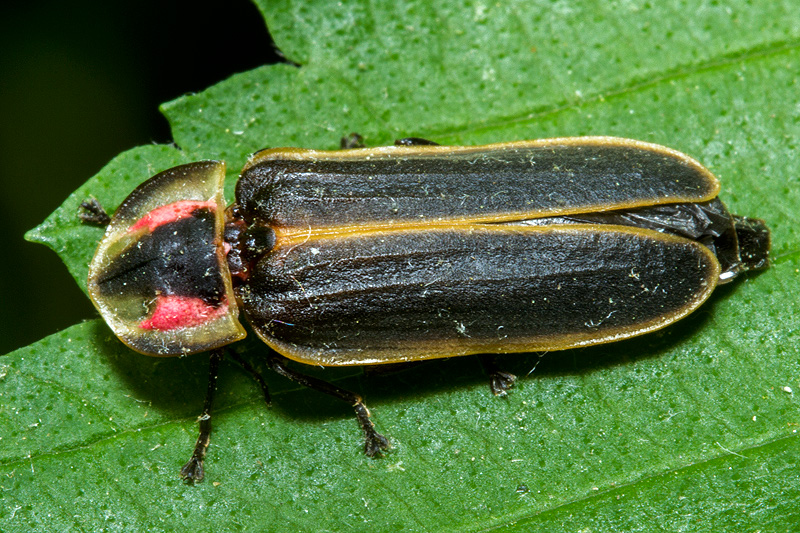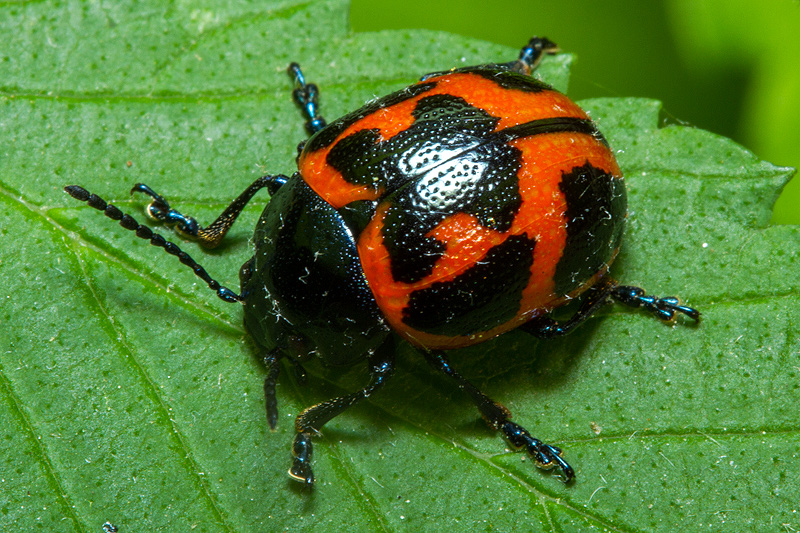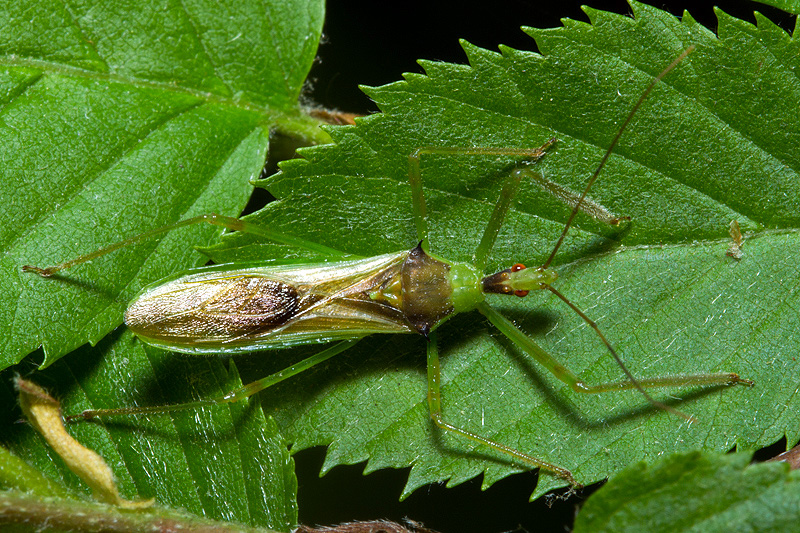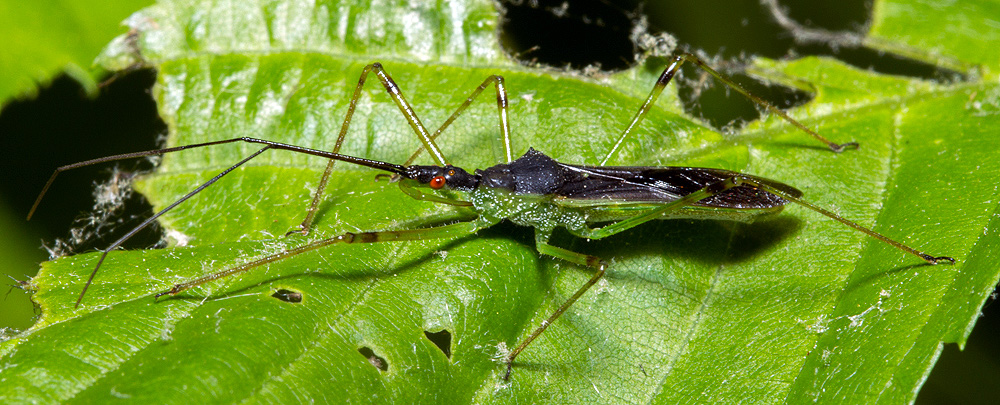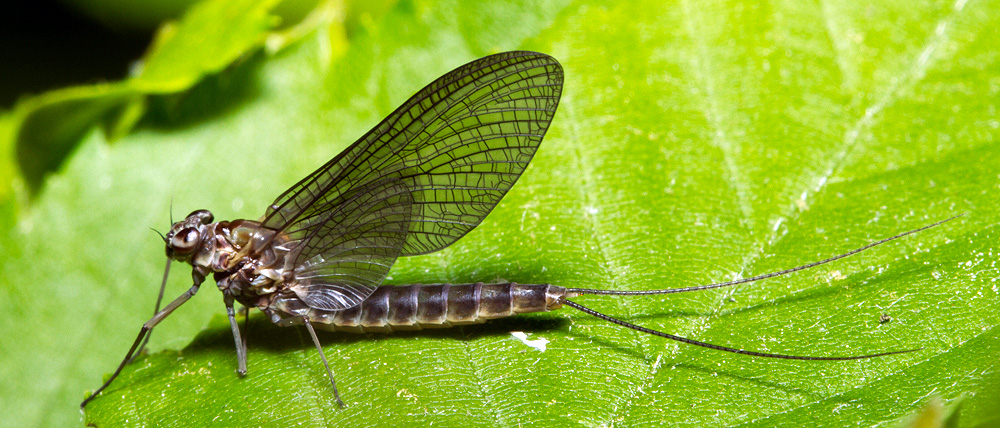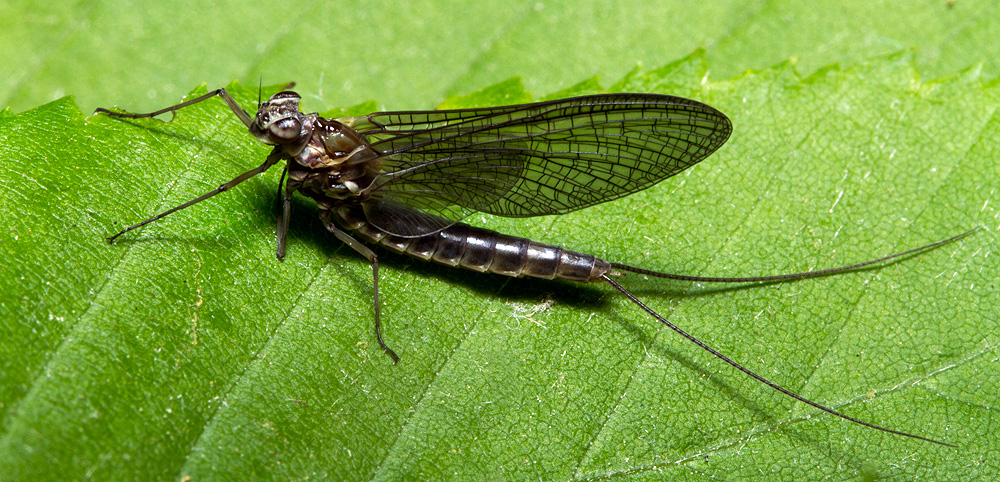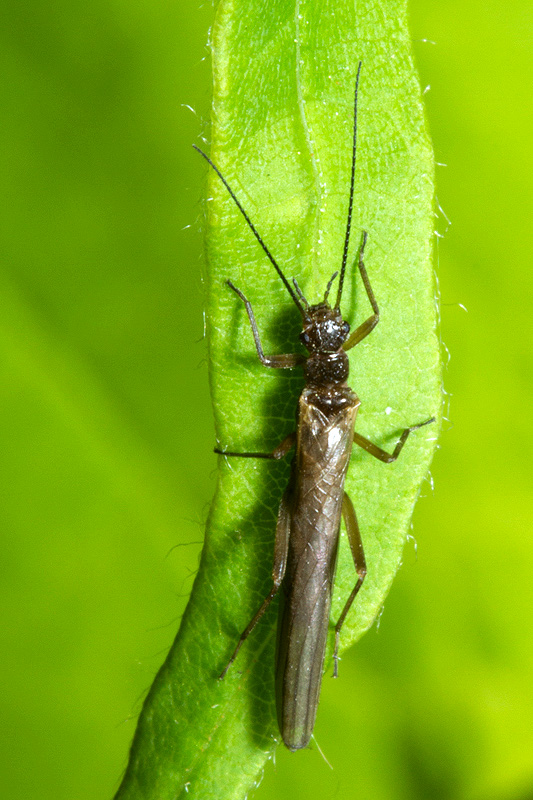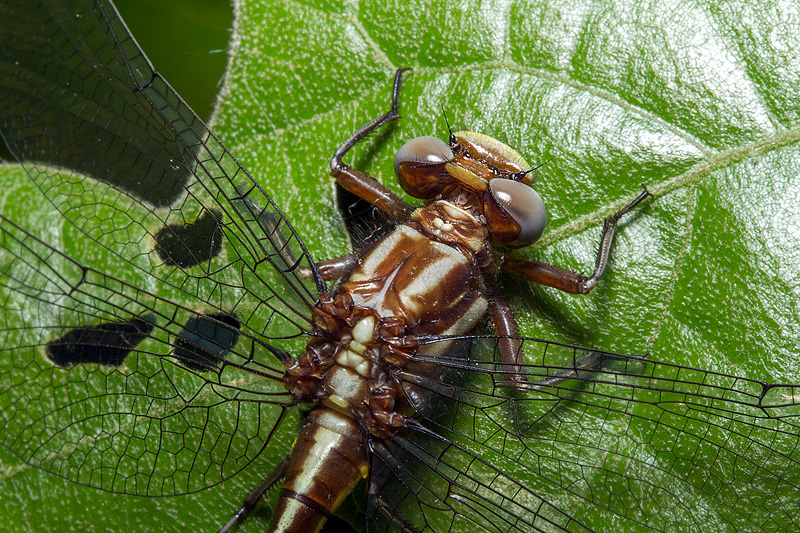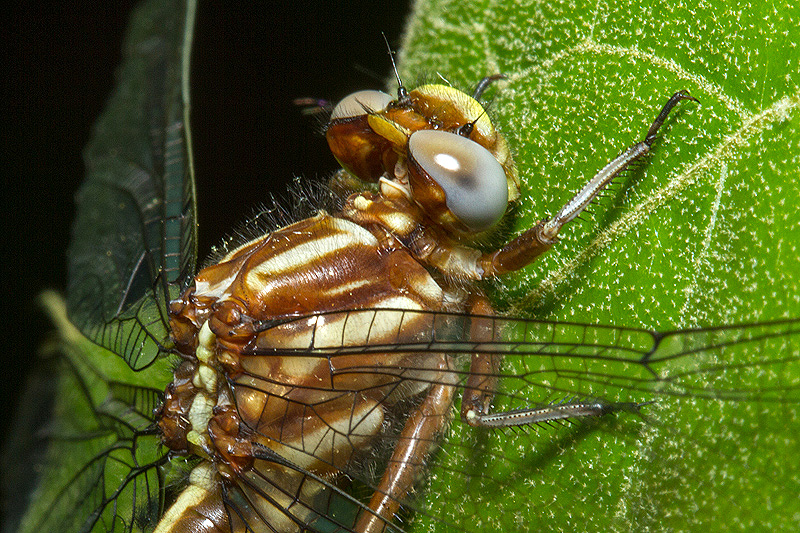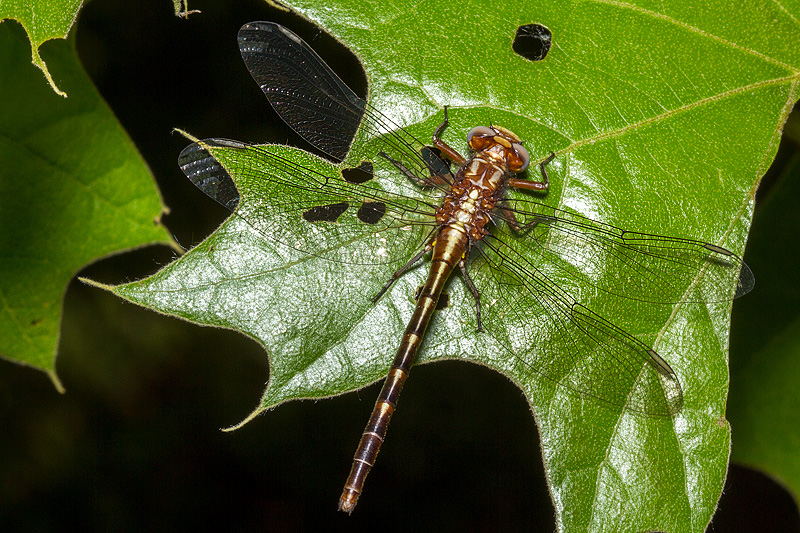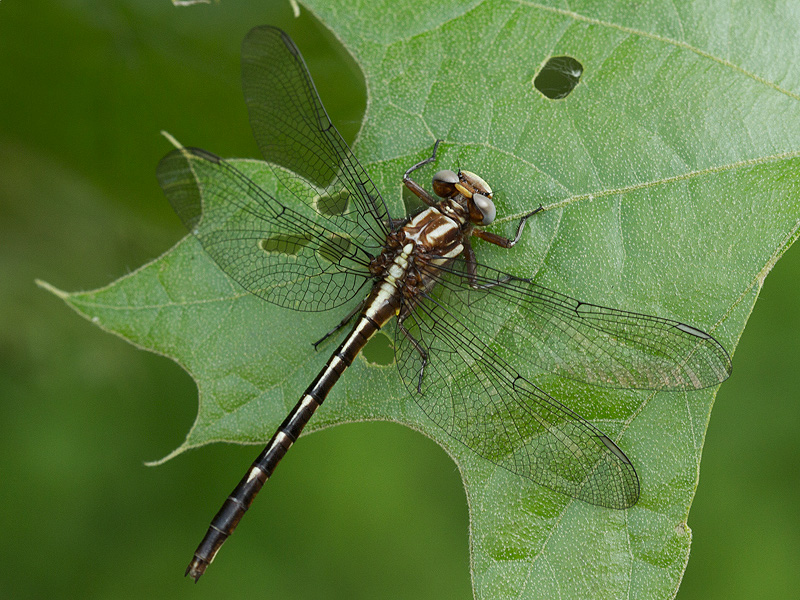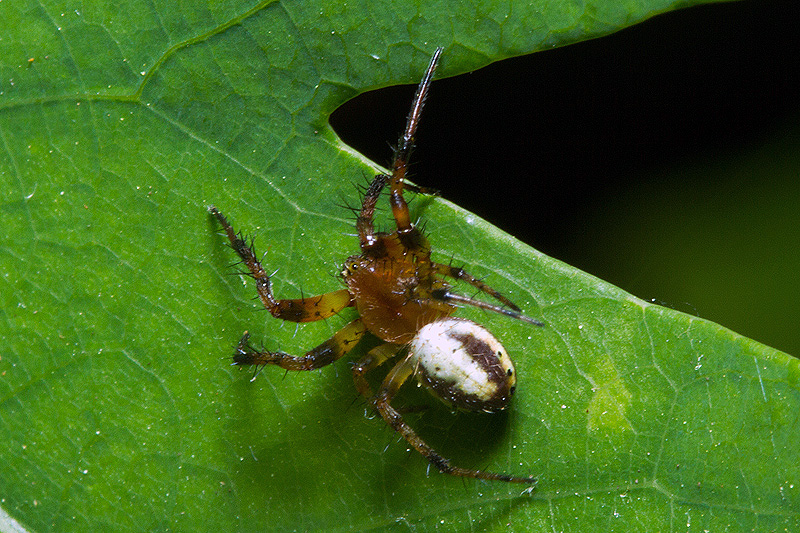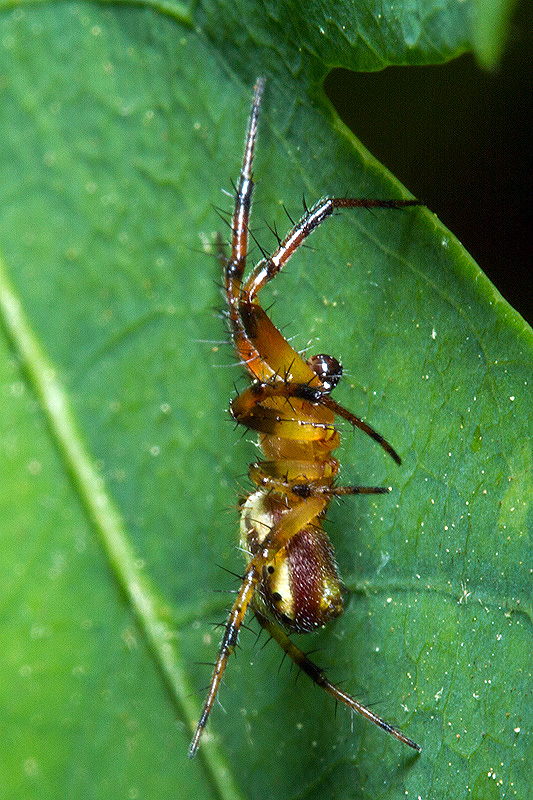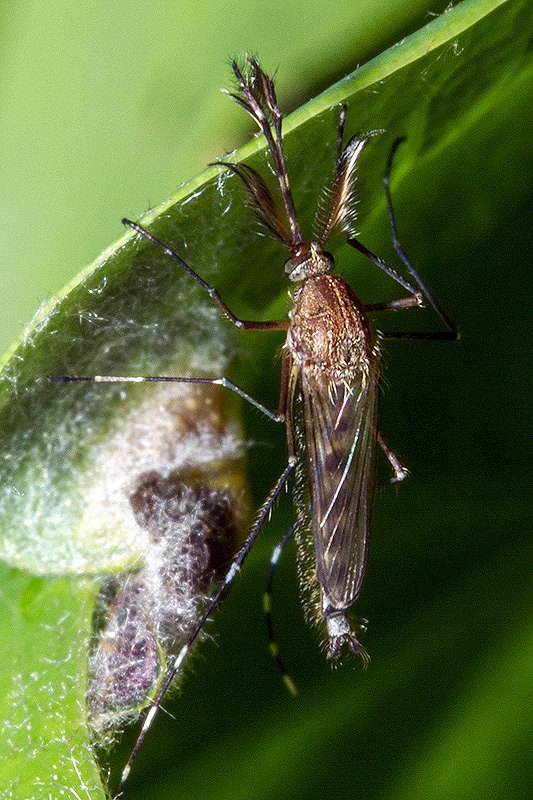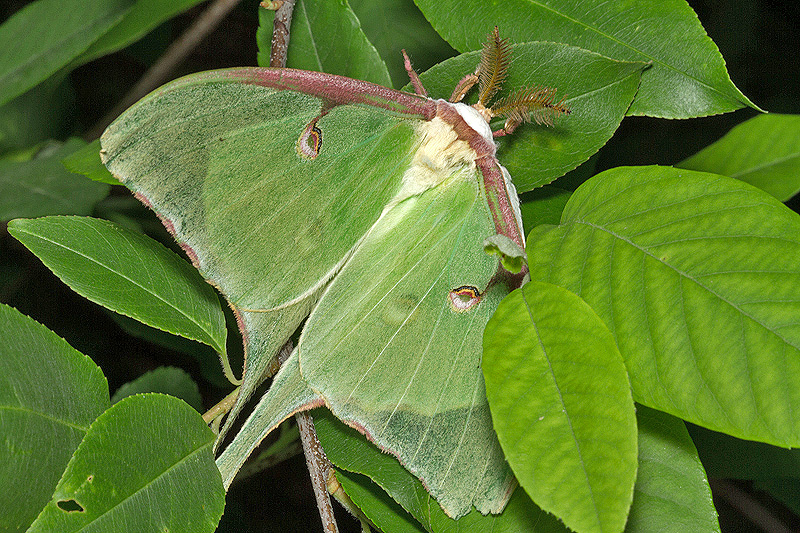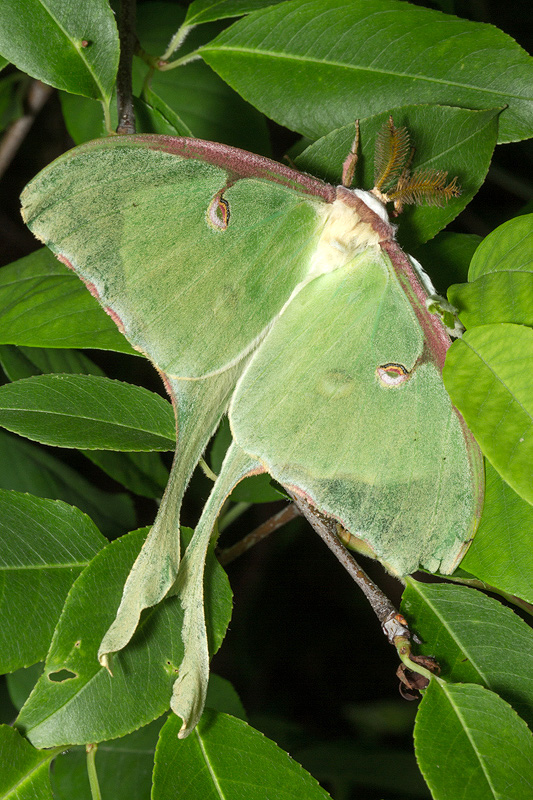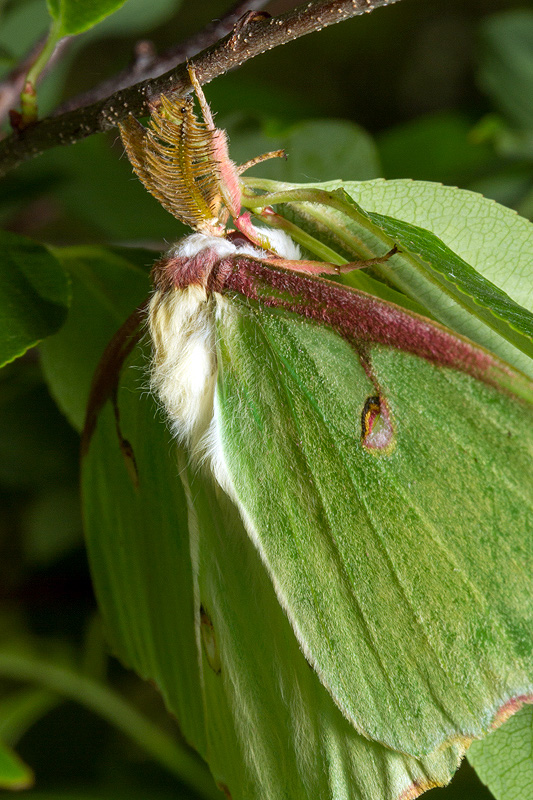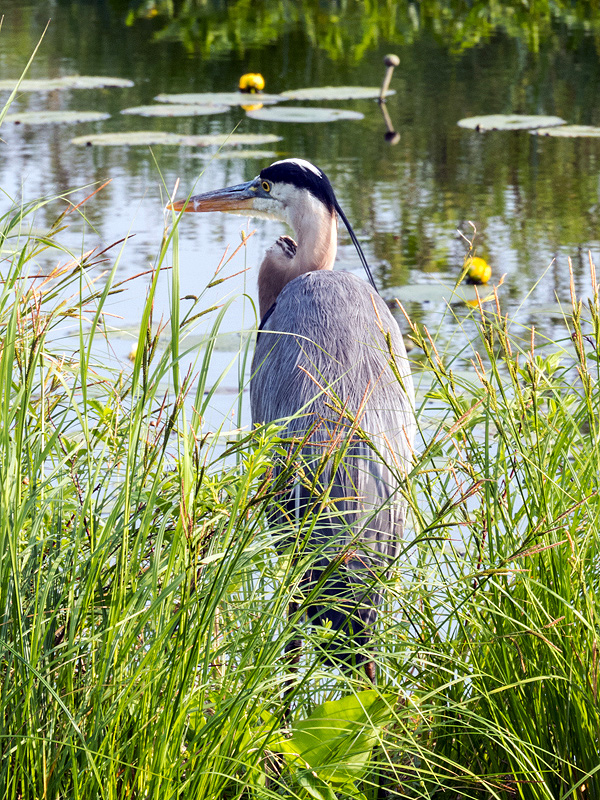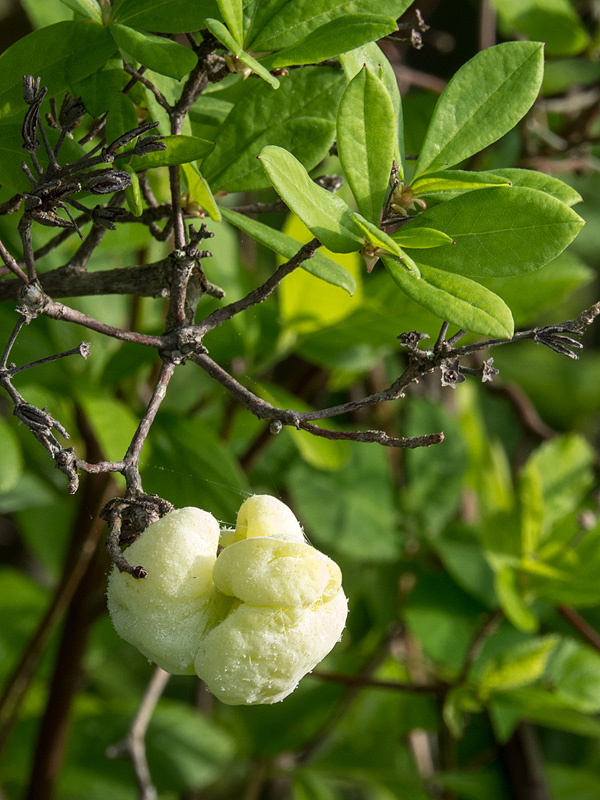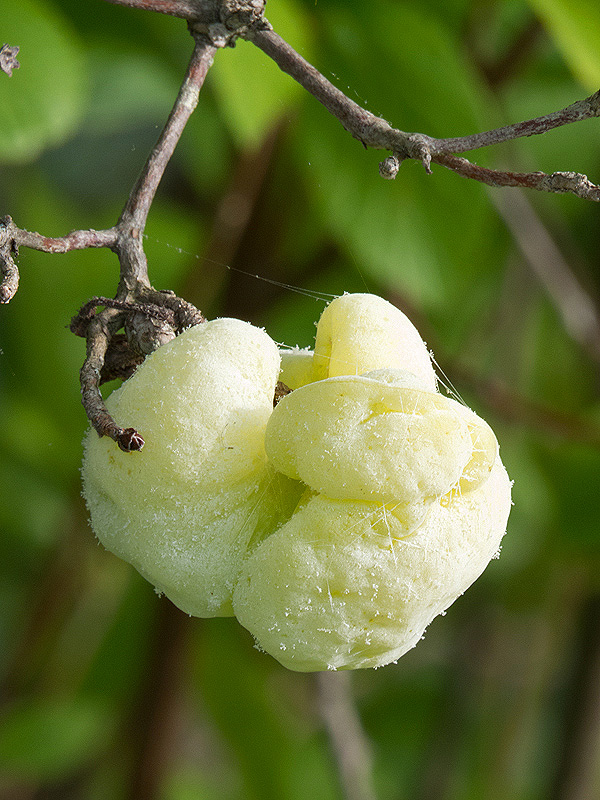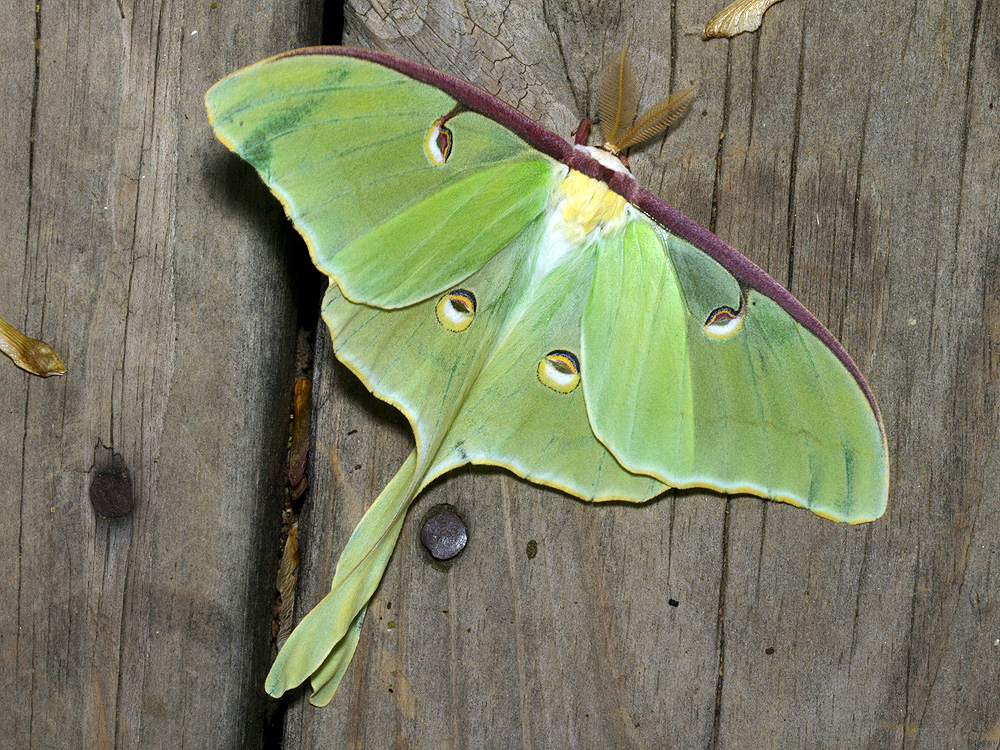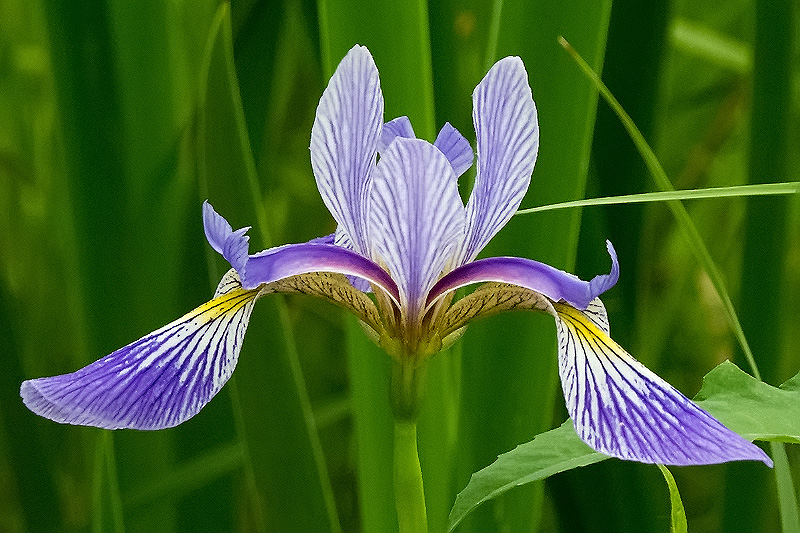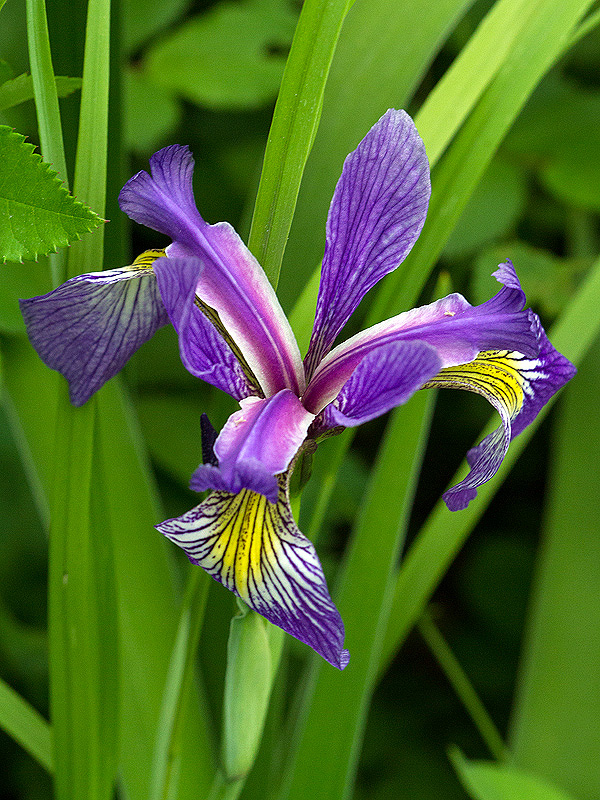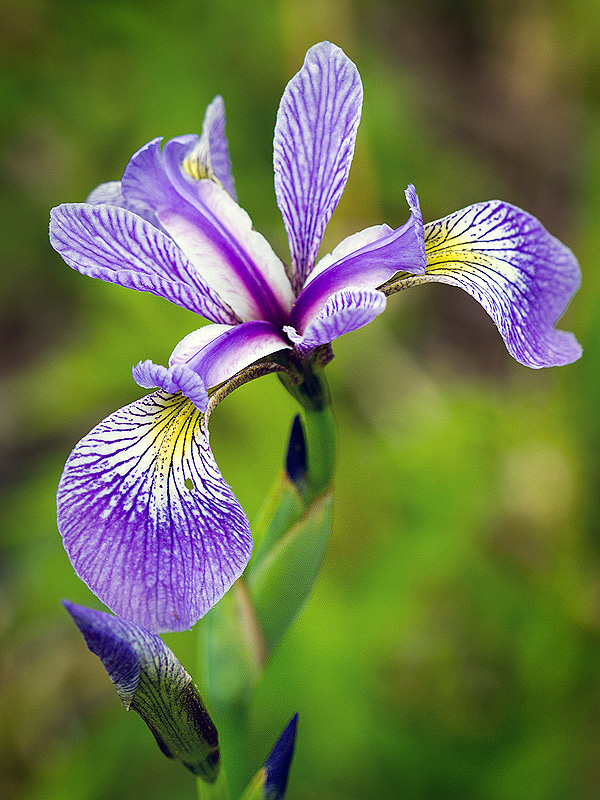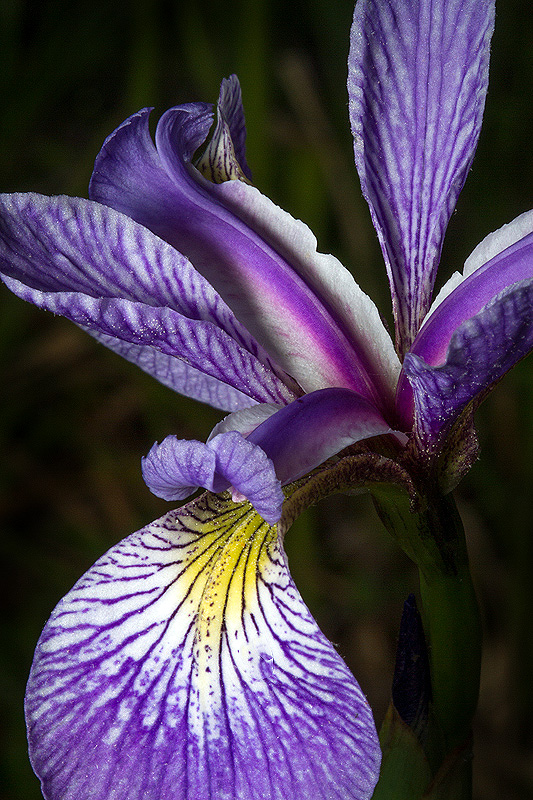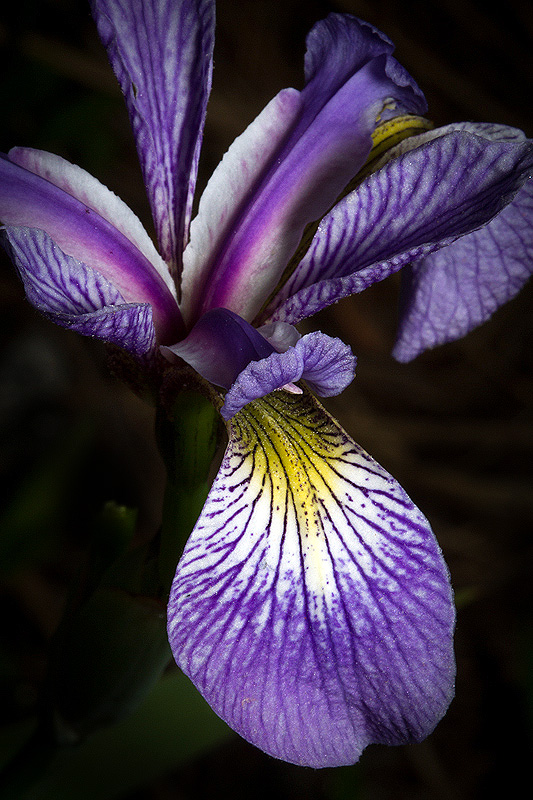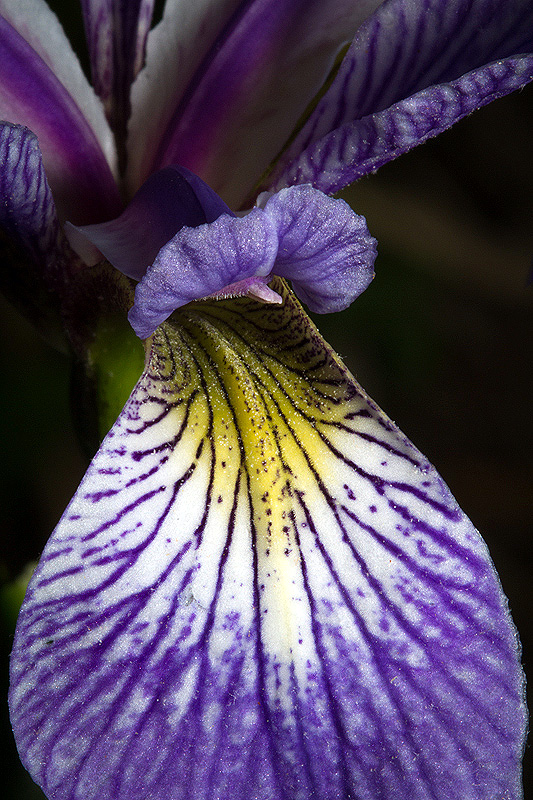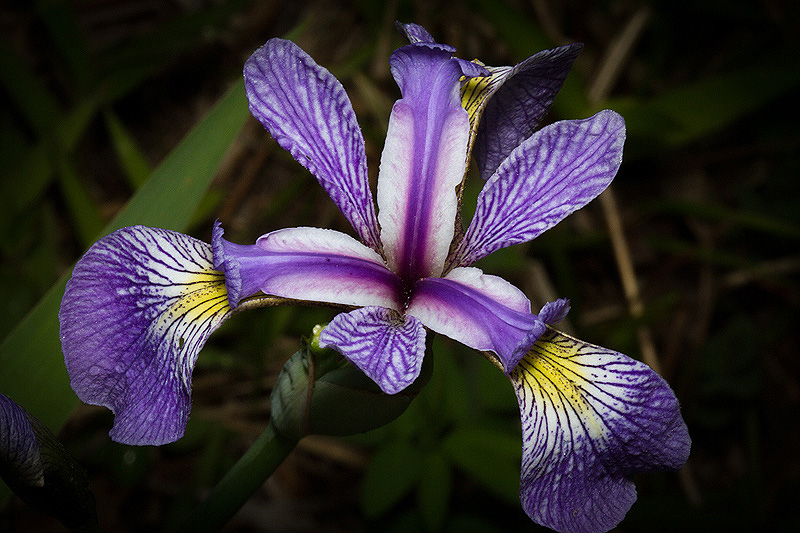Along the Air Line... 2015 - Spring, Part 9 The Air Line Trail in Eastern Connecticut - Stan Malcolm Photos |
mHome Page Stan's FlickR Albums |
May 23rd. A Tufted Titmouse (Baeolophus bicolor) gleaning from trees not far from the Route 85 trail head (behind Juliano Pools, the former Route 85 Lumber). |
|
I'm pretty sure the titmouse was feeding on abundant Mayflies (Order Ephemeroptera) resting on leaves. Why the mayflies were there, a fair distance from the nearest stream, I can't explain. |
The bird may have harvested the occasional caterpillar too. I'm pretty sure this is a Dowdy Pinion (Lithophane unimoda). |
After never seeing Yellow-throated Vireos (Vireo flavifrons), today I saw a second pair at the opposite end of Raymond Brook Marsh from the nest I found closer to Old Colchester Road. I didn't see a nest near this pair. |
Yellow Warbler (Dendroica petechia). Thanks, Roland, for pointing out the nest. |
A pretty tedious time for the female Canada Goose (Branta canadensis). According to Cornell's "All about Birds" site, the female does all the brooding while the male guards the nest. |
A brief afternoon stop at Cranberry Bog in East Hampton. Goslings! |
|
|
|
|
May 24th. Male Orchard Oriole (Icterus spurius). |
Yellow Warbler (Dendroica petechia). |
Red-winged Blackbird (Agelaius phoeniceus). |
Blue Flag iris (Iris versicolor). |
Common Fleabane (Erigeron philadelphicus). |
False Solomon's-seal (Smilacina racemosa). |
|
Young oak leaves, backlit. |
Forest Tent Caterpillar (Malacosoma disstria). Note the white "high-heeled footprints" along its back. These distinguish it from the Eastern Tent Caterpillar which has an unbroken white line. |
Caterpillar of the Banded Hairstreak (Satyrium calanus), on White Oak (Quercus alba). For adult butterflies, see: http://www.naba.org/chapters/nabambc/construct-species-page.asp?sp=banded-hairstreak |
|
|
A Sawfly larva. Not a caterpillar; not a fly; but a kind of wasp. |
A Firefly (Family Lampyridae; probably Pyractomena sp.). |
Swamp Milkweed Leaf Beetle (Labidomera clivicollis). |
Assasin Bug (Zelus sp., probably Z. luridus). Female. |
Male. |
Mayflies (Order Ephemeroptera) are still abundant on foliage behind Juliano Pools. |
|
A Stonefly (Order Plecoptera); another ancient group of insects. |
A Dragonfly, probably a female Lancet Clubtail (Gomphus exilis) or related species. |
|
|
|
Another male Orbweaver spider, similar or identical to one photographed a few days ago. |
|
A male Mosquito (Family Culicidae). In addition to bushy antennae, males have maxillary palps as long as the other mouthparts. Male mosquitoes feed on nectar at flowers; they don't take a blood meal. |
May 26th. A Luna Moth (Actias luna). |
|
|
May 27th. Great Blue Heron (Ardea herodius). |
Azalea Leaf "Gall" or Ghost Ears (Exobasidium vaccinii), a fungal infection of Azaleas. Read about it here. |
Advice is to remove the growths and destroy them - away from the plants to prevent spores from spreading. |
Luna moth (Actias luna), reared from a caterpillar found on the Air Line Trail last fall. Released today; it flew off high and fast. Recently published research finds that the fluttering tails serve to misdirect bat attacks. Read about it, and watch a video. |
May 28th. Blue Flag iris (Iris versicolor). |
|
|
|
|
|
|
